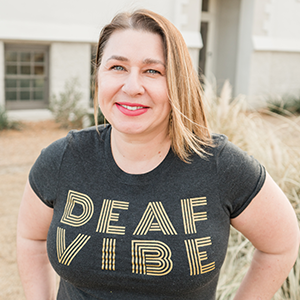Social media has transformed the way we connect, communicate, and consume information. It’s a powerful tool that has the potential to include or exclude, depending on how it’s designed and utilized. In the context of accessibility, the conversation around social media accessibility becomes even more critical.
Hey, I’m Erin, the founder of Mabely Q. As an Accessibility Educator, I teach businesses how to be accessible in all aspects of the business.
When I ask people to tell me what accessibility means, most perceive accessibility as something that applies to “physical accessibility” or even “website accessibility.” And that’s the extent of the understanding of accessibility. I’m going to show you that accessibility is so much more than that.
Let’s start with defining digital accessibility.
Digital accessibility refers to the practice of designing and developing digital content and technology in a way that can be accessed and used by people with disabilities, including but not limited to visual, auditory, physical, or cognitive impairments.
Accessibility is not just a feature; it’s a fundamental aspect of design that ensures inclusivity.
For people with disabilities, barriers on social media can range from:
- images without alt text for the visually impaired
- videos without captions for deaf people
- complex interfaces that are difficult to navigate for those with cognitive disabilities
Addressing these barriers means opening up spaces for more voices and perspectives.
The importance of accessible social media goes beyond the ethical imperative of inclusivity. It also makes good business sense. By making sure your content is being shared on the different social media platforms, you’ll ensure that your followers, friends, and clients remain closely engaged with you at every stage.
When designing graphics that incorporate text, images, and color, focusing on the following elements is crucial to guarantee the content’s accessibility.
- Color Contrast: Use high contrast colors between text and background text.
- Font Readability: Choose a readable font and do not use more than 3 different fonts per post.
- Emoji Usage: For captions, be thoughtful with your emoji usage.
- Captioning: Add caption to any spoken word.
By focusing on improving the design of your content for social media, you’ll quickly be able to make your content more accessible! By embracing accessibility, we can ensure that social media fulfills its true potential as a tool for connection, communication, and community building.
You can grab the Social Media Accessibility Scorecard to check out how you’re doing on your social media! Let’s commit to making social media accessible to all, breaking down barriers and creating a more inclusive digital space.

Erin is a Deafblind entrepreneur, disability rights activist, and accessibility educator dedicated to making the business world more inclusive. Her fierce advocacy comes from her life experiences as a Deafblind woman and owner of a small online business, Mabely Q. Though she founded Mabely Q in 2018 as a graphic designer and online business manager, Erin’s true gift is working with CEOs who want to lead by example. Whether she’s teaching via a keynote speech, private workshop, or one-on-one consulting, Erin freely shares her experiences as a Deafblind woman with others to help make the world a more inclusive place for others with disabilities. She has captured audiences with her empathetic, patient style as a speaker to groups like The Rising Tide Society, Simply Profitable Designer Summit, The Creative Huddle, Blogger Breakthrough summit, and others.
Website: www.mabelyq.com
IG: https://www.instagram.com/mabely_q/
